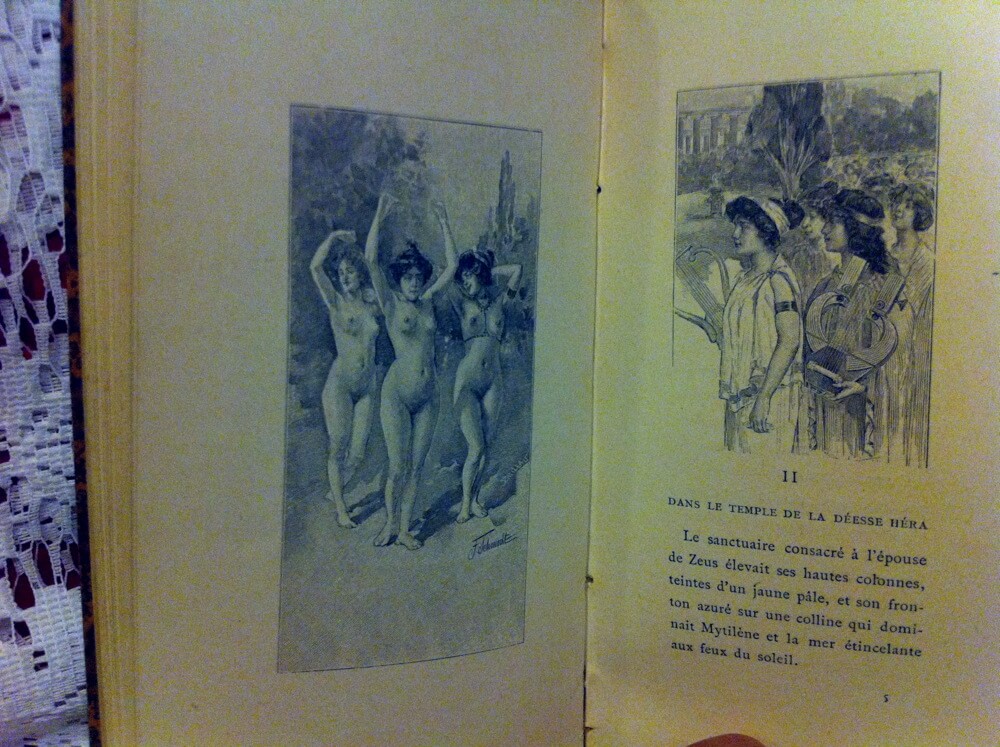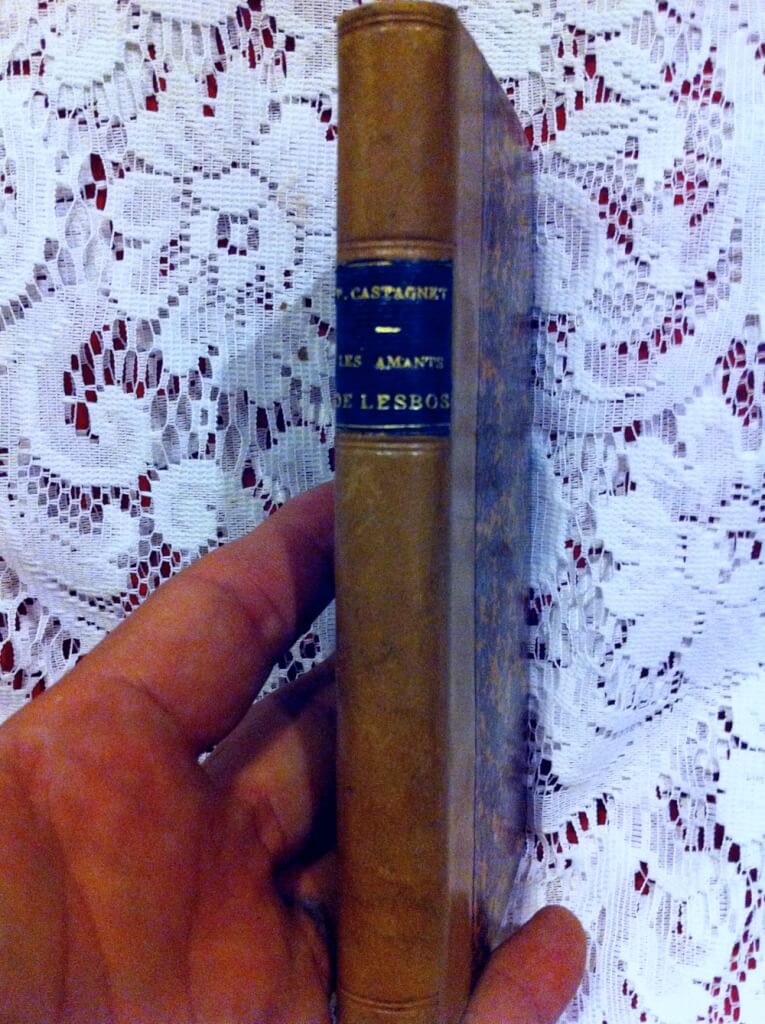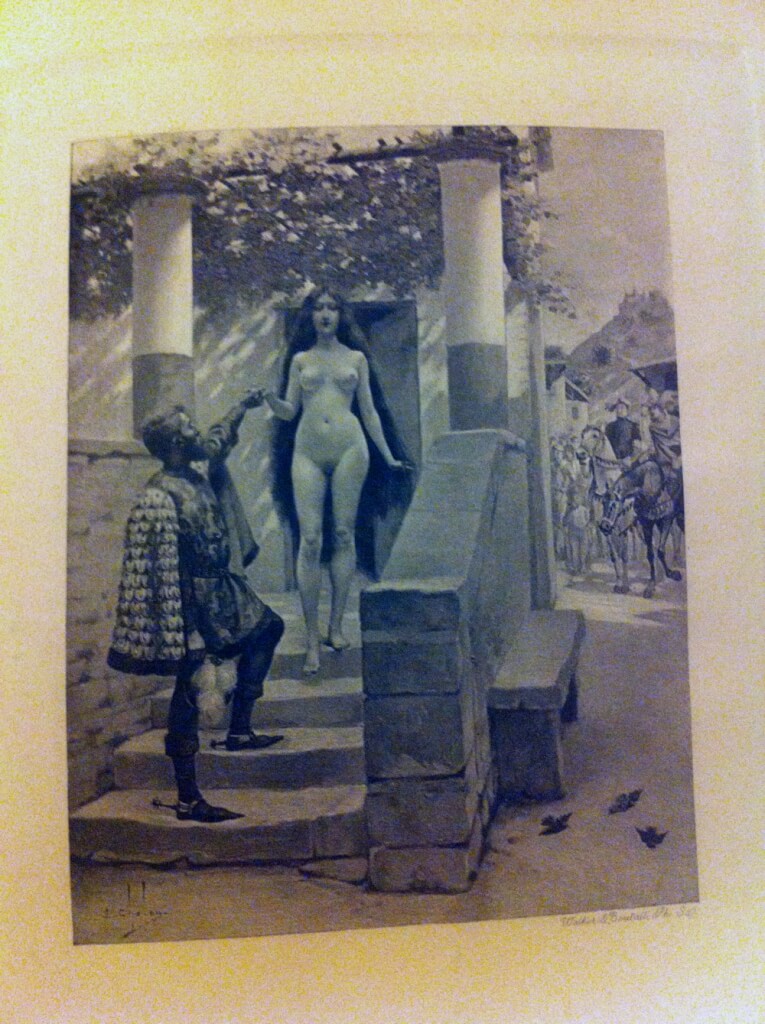Die Weiberherrschaft in der Geschichte der Menschheit [The Rule of Women in the History of Mankind], Eduard Fuchs, Alfred Kind (Albert Langen, München, 1913)
8.75″ X 11″, complete set, 2 volumes plus supplementary volume, x+1-348pp, 349-711pp, ix+319pp, decorated green cloth boards, decorated cloth endpapers, binding loose by design and very much intact on all volumes (binding is often a problem with this edition), Vol. 1&2 contain 665 illustrations and 90 tipped in illustrations. The supplemental volume contains 317 illustrations and 34 tipped in illustrations. Minor bumping on covers, in excellent condition for age.
Compiling 665+317 reproductions of drawings, prints and paintings from the collection of Eduard Fuchs, this edition shows how the image of female domination and male submission was widespread in Europe from the Renaissance to the early 20th century.
Edward Fuchs (1870-1940). Fuchs’ father was a shopkeeper. Early in his life, the younger Fuchs developed socialist and Marxist political convictions. In 1886, he joined the outlawed political party Sozialistische Arbeiterpartei (the precursor of the modern SPD, Sozialdemokratische Partei Deutschlands). Fuchs received a doctor of law degree and practiced as an attorney. In 1892, he became editor-in-chief of the satiric weekly Süddeutscher Postillon and later co-editor of the Leipziger Volkszeitung. His inflammatory articles in newspapers—one accusing the Kaiser of being a mass murderer—resulted in periodic jail sentences. During his periods of confinement, Fuchs wrote various social histories utilizing images as one of his primary sources. The first of these was his Karikatur der europäischen Völker (Caricatures of European Peoples), 1902.
He moved to Berlin that same year where he edited the socialist newspaper Vorwärts. The following year he began his magnum opus, an examination of moral practice, Sittengeschichte, eventually running to six volumes by 1912. While engaged in this series, he followed up his interest in caricatures with one devoted to the representation of women, Die Frau in der Karikatur, 1905 (3 vols). Another book documenting the stereotypical representations of Jews appeared in 1912. Fuchs traveled with the artist Max Slevogt to Egypt in 1914, shortly before the outbreak of World War I. He was a pacifist during the War. Lenin’s government put him in charge of prisoner exchange with Germany after the war; he was among the leaders of the German Comintern in Berlin in 1919. His interest in societal concerns in caricature led to a research interest in Daumier. Beginning in 1920, Fuchs published a catalogue raisonné on the artist in three volumes. He resigned from the party in 1929, following the expulsion of several stalwarts. At Hitler’s ascension to power in Germany in 1933, Fuchs moved to France.










Reviews
There are no reviews yet.